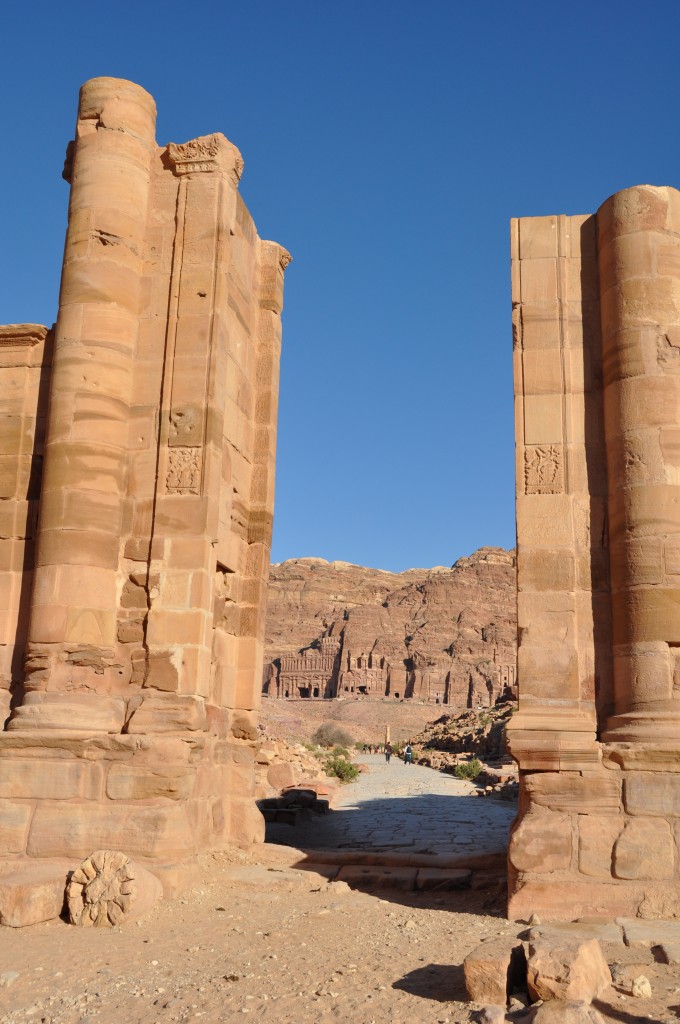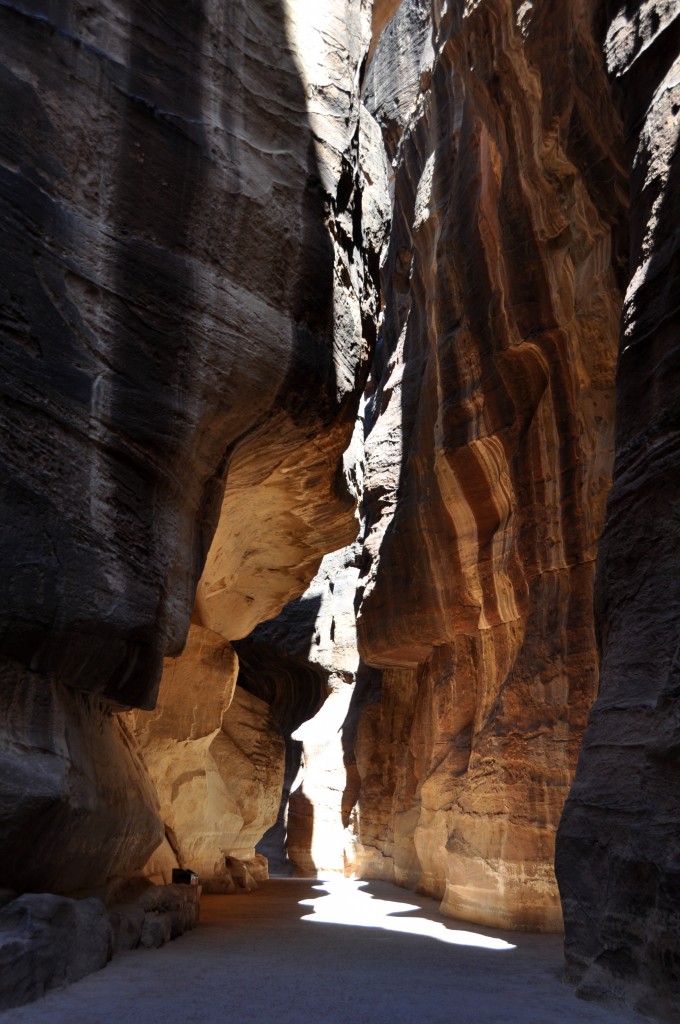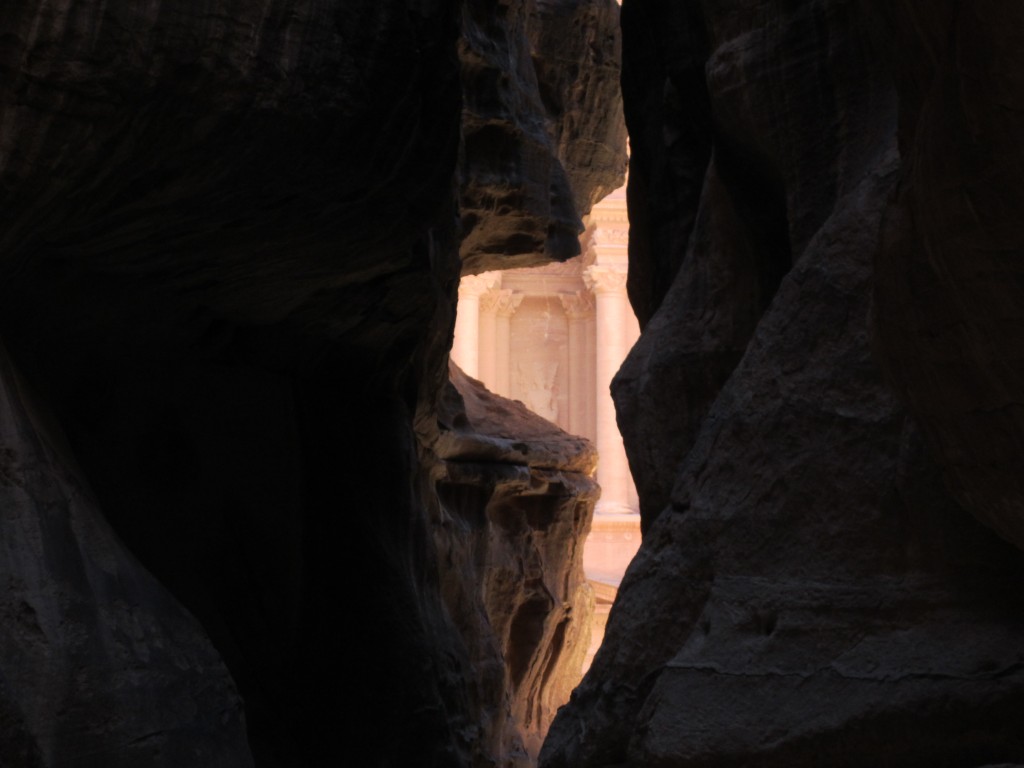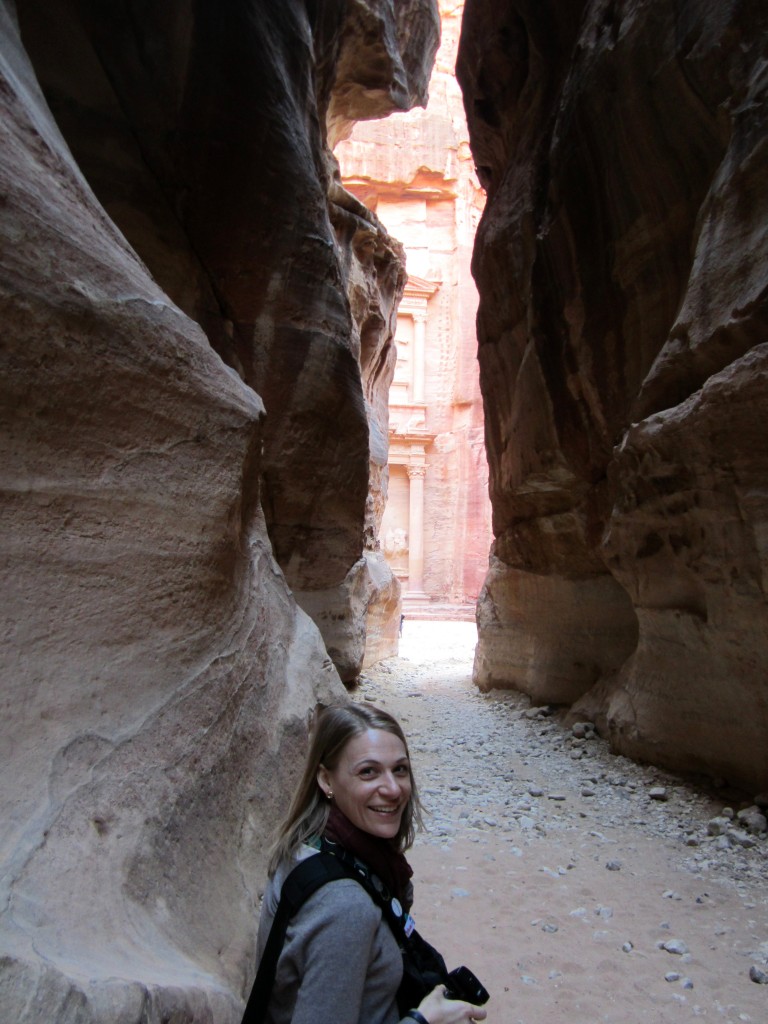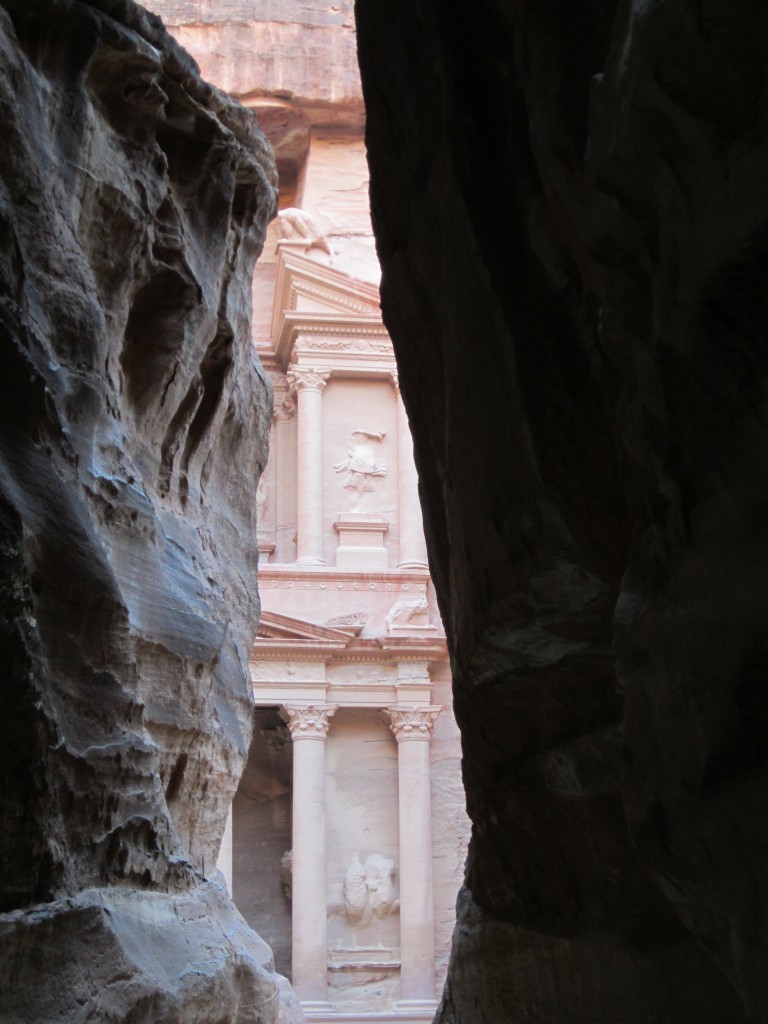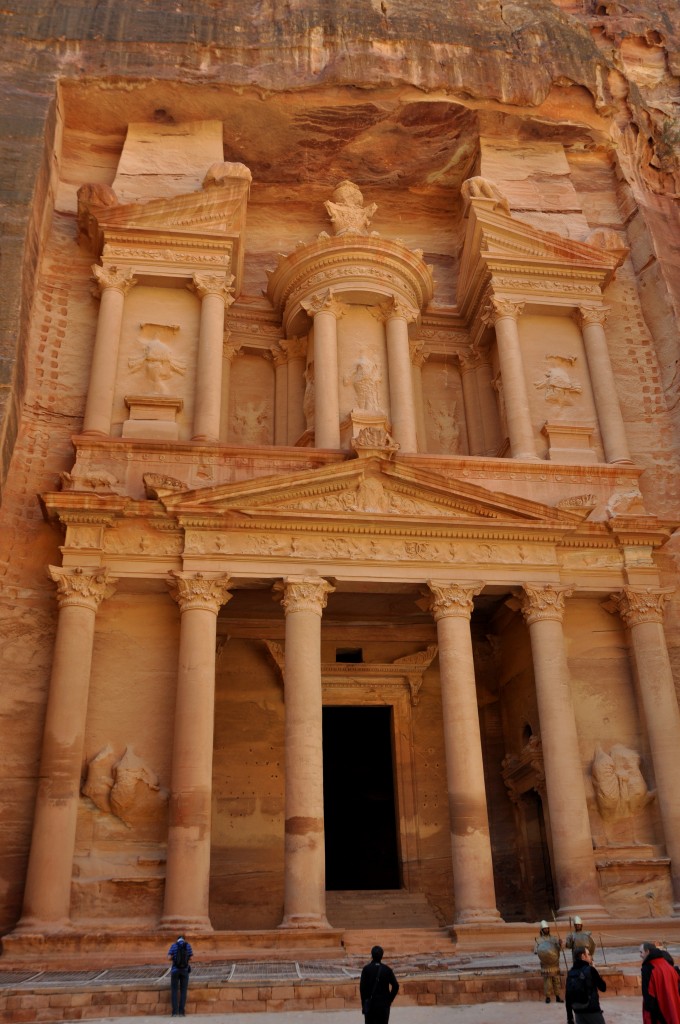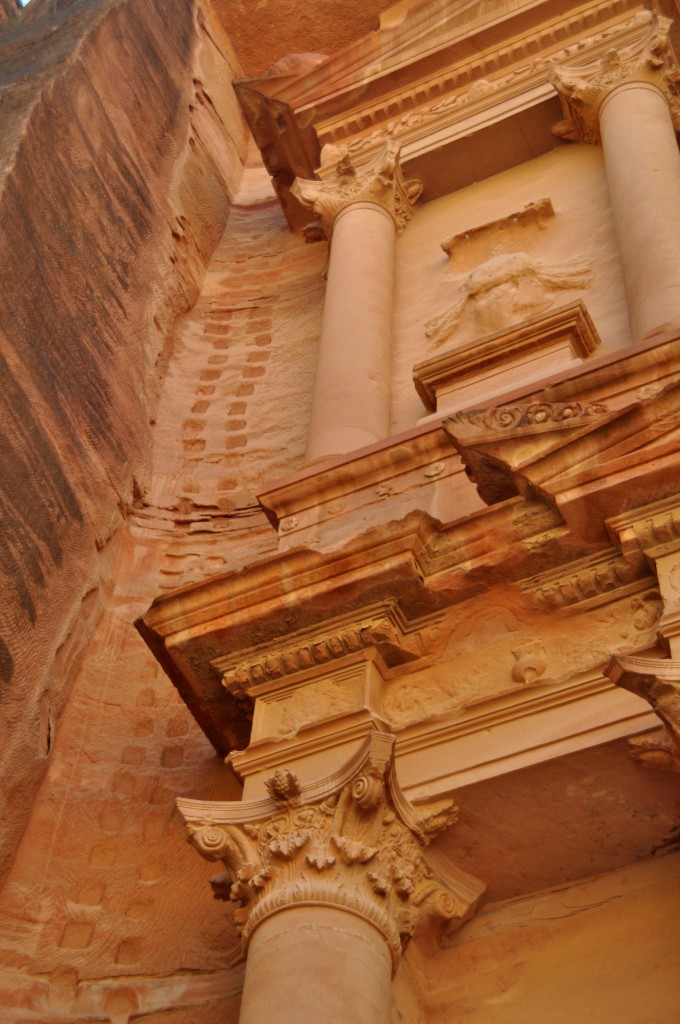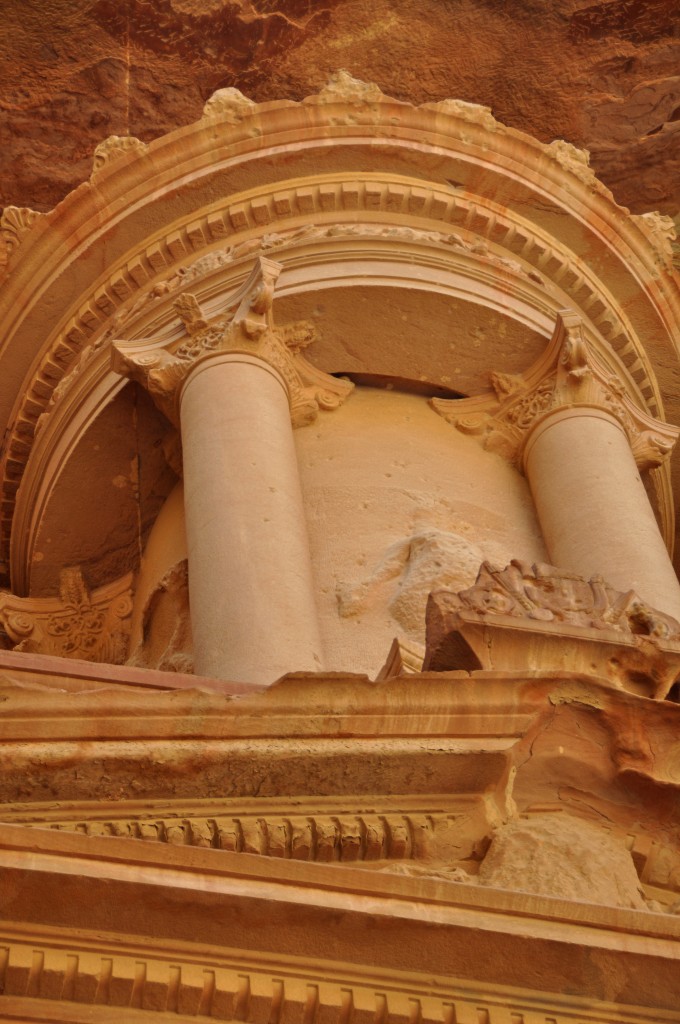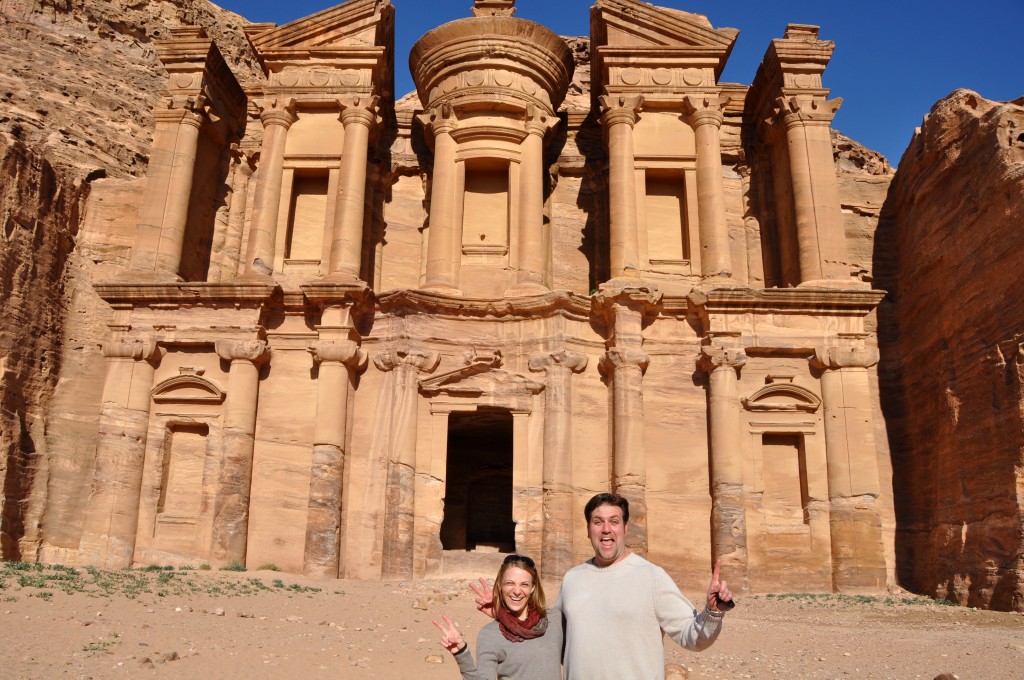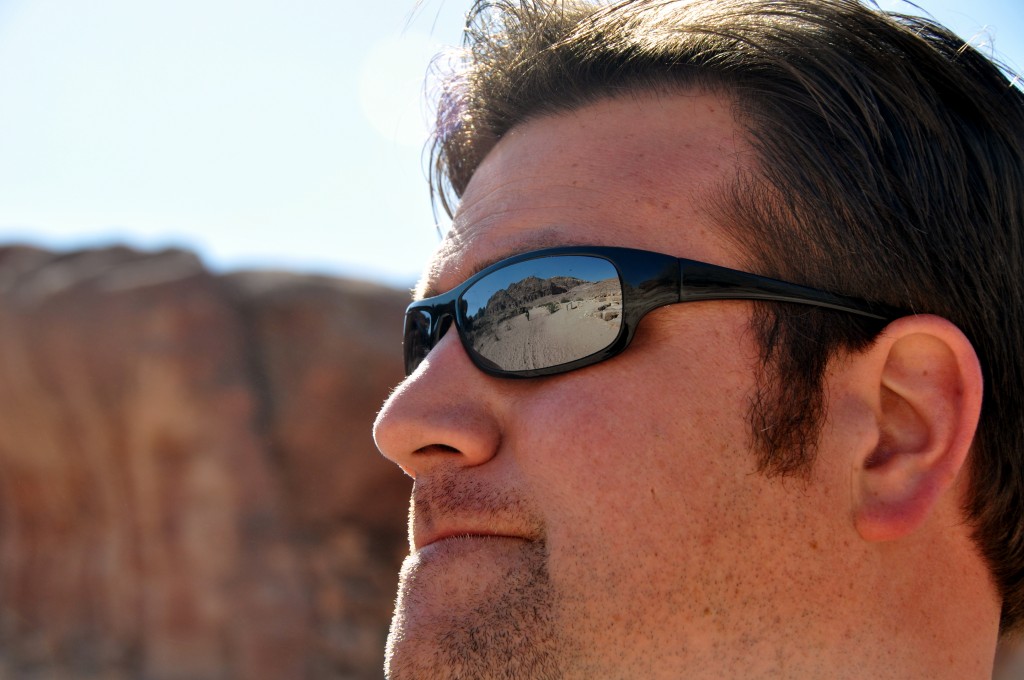You’ve seen it a million times before: Indiana Jones and the Last Crusade, Arabian Nights, Sinbad and the Eye of the Tiger, Transformers: Revenge of the Fallen (ok, maybe only in Indiana Jones). Regardless, Petra in real life is just as amazing as the movies make it out to be. Great weather never hurts either!
Petra was built by the Nabataeans sometime between 60 BC and 50 AD and discovered in 1812, by a Swiss explorer. What I found to be the most interesting thing about Petra, is that back in its heyday, it was actually not a desert at all. It was lush and green, with trees and flowing rivers. Clearly climate change has defined how this natural wonder is iconized in the minds of the modern world.
In order to get to Petra’s most famous site, you have to walk through the “As Siq”, a large narrow gorge.
What’s fun about walking through the Siq is that it builds up so much anticipation. It is great to learn about all the interesting rock formations and evidence of ancient sculptures, but really, let’s just get to it all ready! Our guide called it “the moment before the moment”. When the Treasury is just peeking out between the canyon walls.
Wait for it…
Wait for it…
There she is! Al Khazneh, the Treasury, in all her glory…finally!
The Treasury is carved out of one block of sandstone, which means that is really easily eroded by wind and rain. Amazingly, the only portion of this structure that has been re-constructed is the third column from the left, from the dark band to the capital. The site where the Treasury is located was so well protected from erosion, that the structure is still standing thousands of years later. How cool is that?!
Due to the fragile nature of sandstone, the structure actually had to be built from the top down. To the right and left you can see “ladders” that were used by workers to carve out the beautiful facade.
The name “Al Khazna” comes from a Bedouin legend that a pharaoh hid a treasure in the urn at the top, which looters tried to confiscate. The “bullet holes” are still visible from their attempt.
In all reality, the Treasury was used as a mausoleum for royals, hence its elaborate friezes and detailed carvings.
After the Treasury, we walked deeper into Petra and climbed 800+ steps to Ad Deir, the Monastery. Although not as beautiful as the Treasury, or as well known, it is the largest monument in Petra, measuring 47m wide and 51m high. It is also younger, thought to be created around 110 AD.
It was quite a hike back and forth to the Monastery, but well worth it. Especially after meeting “Noel Christmas”, who was trying to sell us her wares. Noel Christmas – yeah, that sounds like a real authentic Jordanian Bedouin name if I ever heard one.
Jordan, not just for movie makers!

